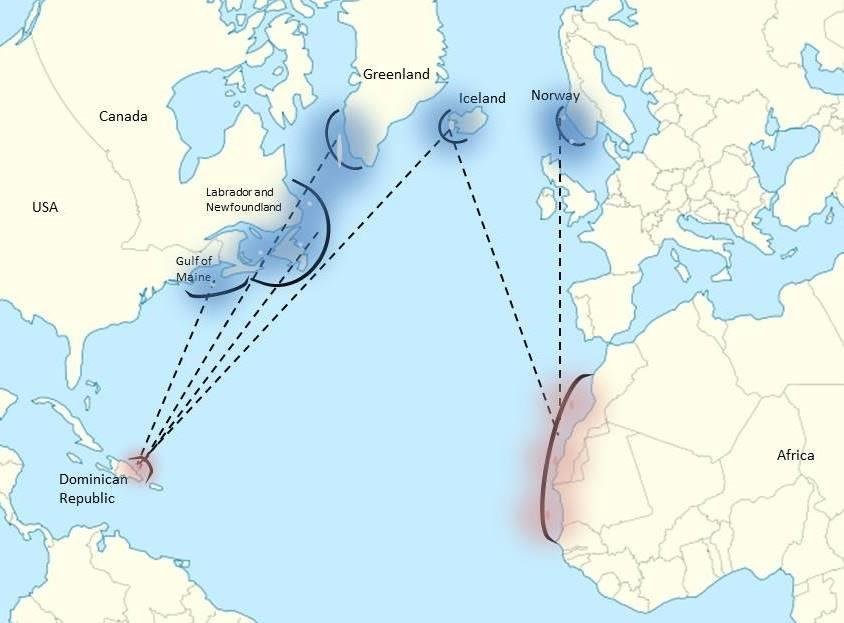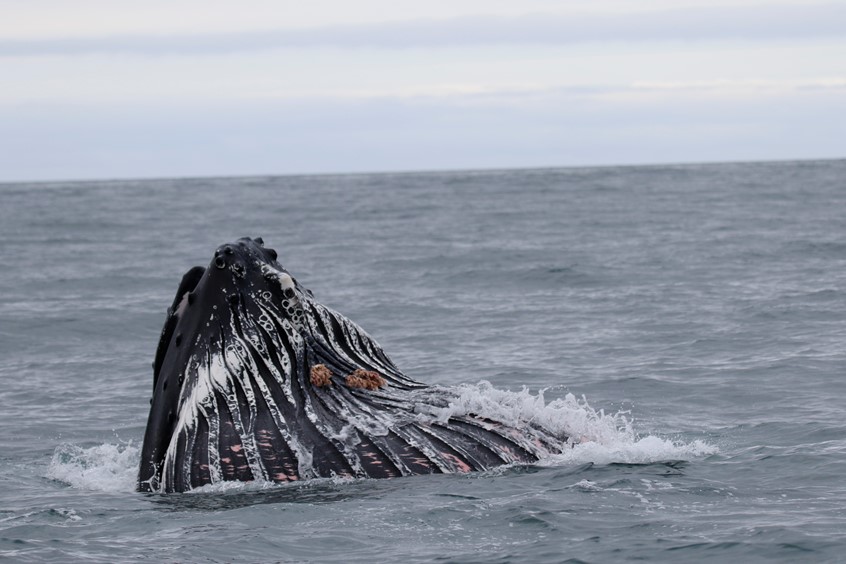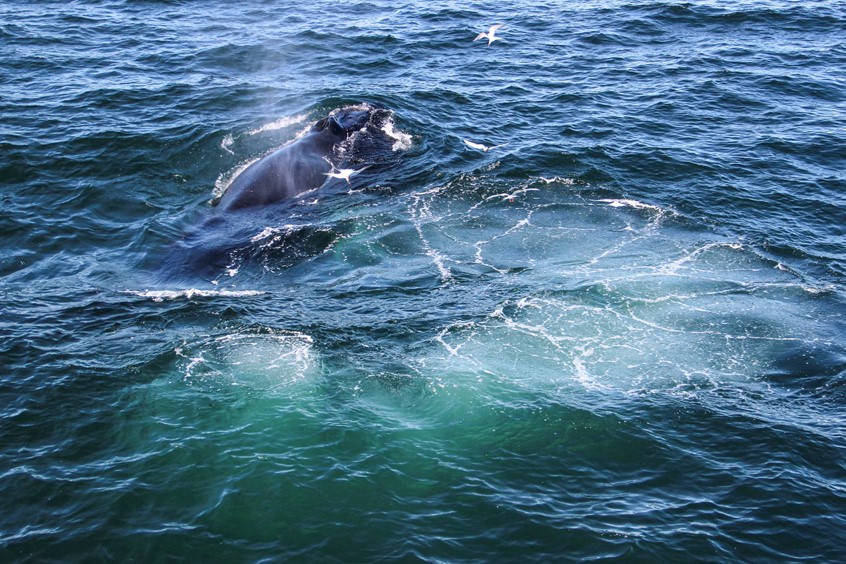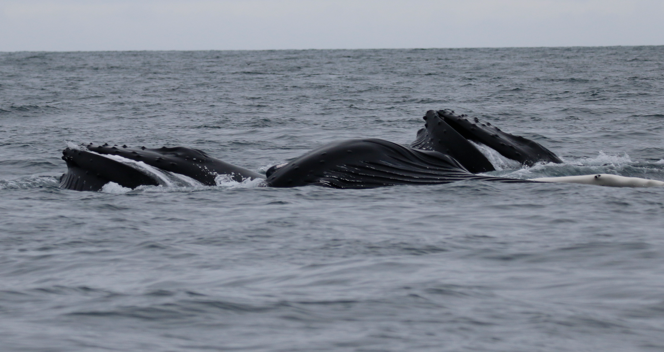THE PATH TO PLANKTON- FEEDING OF THE HUMPBACK WHALES

The beautiful humpback whales are a migratory species. They travel from tropical waters—their breeding grounds—to enjoy an all-you-can-eat buffet in Skjálfandi Bay!
The whales we see here belong to the North Atlantic population, and they come to us from places like the Caribbean Sea, the Dominican Republic, and West Africa.

Migration pattern of the humpback whales in the North Atlantic Ocean- Source ResearchGate uploaded by Mithriel Mackay
Humpback whales are baleen whales—also known as Mysticeti—just like the blue whale, fin whale, and minke whale. This means they have no teeth! Instead, they use baleen plates that hang from the upper jaw. A humpback can have up to 400 plates on each side, which means up to 800 in total!

Two humpback whales lunge feeding, exposing the baleen plates - Photo taken by Josephine Aussage
These magnificent whales are filter feeders, meaning they don’t chew their food (they can’t—they have no teeth!). Instead, they filter it out of the water. Here’s how it works:
They open their mouth underwater, and as they swim toward the surface, the mouth fills with water and prey. The throat pouch on the lower jaw expands like a balloon. Once they reach the surface, they close their mouth and push the water out through the baleen plates. The food—like plankton and anchovies—gets stuck on the baleen, the whale expels the saltwater, and then swallows the leftover prey.

A humpback whale exposing its white throat pouch during feeding- Photo taken by Nikolina Sokcic
They only need a narrow throat, about the size of an orange, because their diet is made up of tiny organisms, not large prey.
There are different ways these whales can feed. One of them is called lunge feeding—the whale swims up with its mouth open and closes it at the surface. It’s a spectacular sight, because sometimes we can see right inside the whale’s mouth!

Humpback whales feeding—expelling water through their baleen plates, with one whale surfacing with its mouth still open- Photo taken by Josephine Aussage

A rear view of a feeding humpback whale, expelling water through its baleen as part of the filter-feeding process- Photo taken by Nikolina Sokcic
Another method is bubble-net feeding, where the whale blows bubbles underwater in a spiral, creating a “net” around its prey to trap it in a tight ball. This behavior isn’t very common in our bay—but we’ve been seeing more and more of it lately! One famous bubble-net feeder here is a whale named Primeiro (click here to meet him)—he’s known for putting on a real bubble show!

Humpback whale bubble net feeding- Photo taken by Sarah Arndt
Since baleen whales aren’t typically social, they often migrate and feed alone. But now and then, they join together to feed—and it’s always a magical moment to witness whales socialising and feeding in groups.

Humpback whales lunge feeding together, one rolling on its side- Photo taken by Nikolina Sokcic
So what makes Skjálfandi Bay so special? Why do whales come here?
Part of the answer lies in our breathtaking mountains—the Kinnarfjöll (also known as the Cheek Mountains). These mountains stay snow-covered all year, but in summer, the melting snow releases freshwater and nutrients into the bay.
Thanks to the unique shape of the seafloor, the bay experiences upwelling—when nutrients rise from the bottom to the surface. Cold Arctic currents also mix with the waters of the bay, spreading nutrients even further. Combined with 24-hour daylight in summer, these conditions create the perfect environment for plankton to bloom—forming the base of the food web and attracting the whales.
 Three humpback whales with the breathtaking Kinnarfjöll (Cheek Mountains) in the background- Photo taken by Nikolina Sokcic
Three humpback whales with the breathtaking Kinnarfjöll (Cheek Mountains) in the background- Photo taken by Nikolina Sokcic
Every tour is different, and that’s what makes whale watching so special. If you're lucky, you might witness these breathtaking feeding behaviours in real life.
Keep whale watching, and stay curious.
—Nikolina Sokcic, Guide
